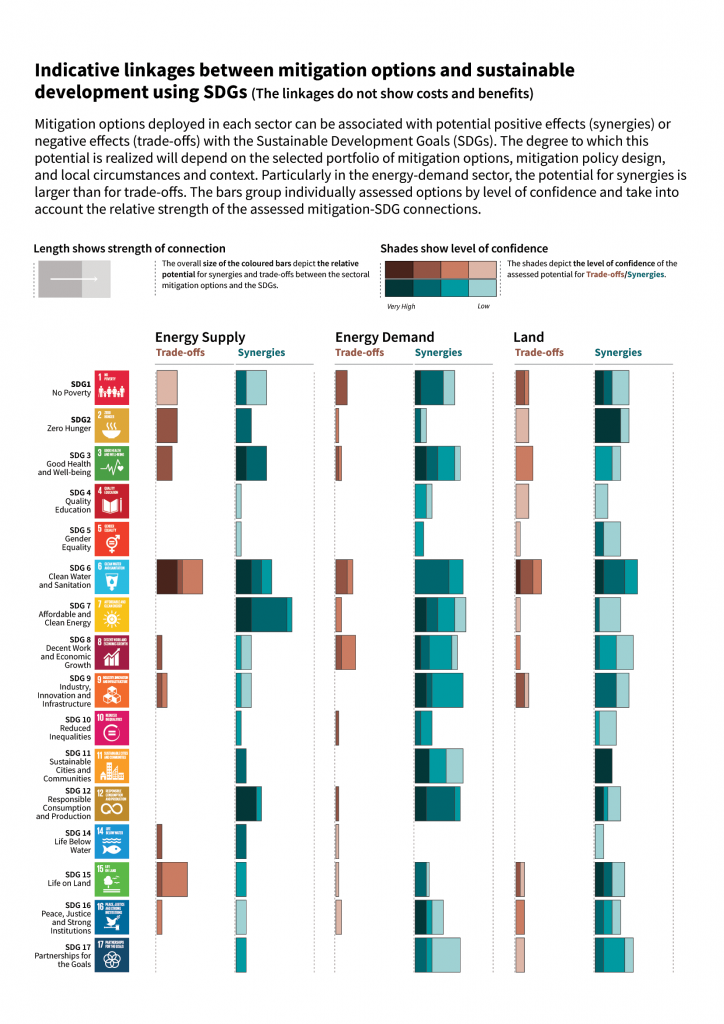
Figure SPM.4
Potential synergies and trade-offs between the sectoral portfolio of climate change mitigation options and the Sustainable Development Goals (SDGs). The SDGs serve as an analytical framework for the assessment of the different sustainable development dimensions, which extend beyond the time frame of the 2030 SDG targets. The assessment is based on literature on mitigation options that are considered relevant for 1.5°C. The assessed strength of the SDG interactions is based on the qualitative and quantitative assessment of individual mitigation options listed in Table 5.2. For each mitigation option, the strength of
the SDG-connection as well as the associated confidence of the underlying literature (shades of green and red) was assessed. The strength of positive connections (synergies) and negative connections (trade-offs) across all individual options within a sector (see Table 5.2) are aggregated into sectoral potentials for the whole mitigation portfolio. The (white) areas outside the bars, which indicate no interactions, have low confidence due to the uncertainty and limited number of studies exploring indirect effects. The strength of the connection considers only the effect of mitigation and does not include benefits of avoided impacts. SDG 13 (climate action) is not listed because mitigation is being considered in terms of interactions with SDGs and not vice versa. The bars denote the strength of the connection, and do not consider the strength of the impact on the SDGs. The energy demand sector comprises behavioural responses, fuel switching and efficiency options in the transport, industry and building sector as well as carbon capture options in the industry sector. Options assessed in the energy supply sector comprise biomass and non-biomass renewables, nuclear, carbon capture and storage (CCS) with bioenergy, and CCS with fossil fuels. Options in the land sector comprise agricultural and forest options, sustainable diets and reduced food waste, soil sequestration, livestock and manure management, reduced deforestation, afforestation and reforestation, and responsible sourcing. In addition to this figure, options in the ocean sector are discussed in the underlying report. {5.4, Table 5.2, Figure 5.2}
Information about the net impacts of mitigation on sustainable development in 1.5°C pathways is available only for a limited number of SDGs and mitigation options. Only a limited number of studies have assessed the benefits of avoided climate change impacts of 1.5°C pathways for the SDGs, and the co-effects of adaptation for mitigation and the SDGs. The assessment of the indicative mitigation potentials in Figure SPM.4 is a step further from AR5 towards a more comprehensive and integrated assessment in the future.